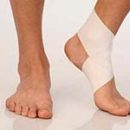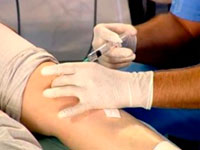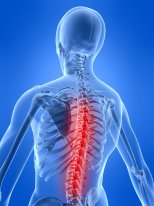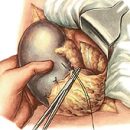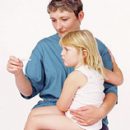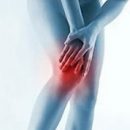The deforming arthrosis of the hip joint or coxarthrosis is a severe degenerative-dystrophic disease, the symptoms of which are developing gradually and for a long time remain unnoticed. The causes of arthrosis are diverse, at first glance, innocuous factors are able to become a starting step towards the development of osteoarthrosis 1 degree.
Content
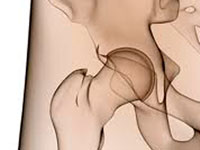 Dumbness pain in the area of hip joint are familiar with almost every elderly person. Usually they are subject to non-serious, binding unpleasant sensations with age and overwork. However, such a malaise may be a manifestation of severe degenerative dystrophic disease — deforming arthrosis hip joint, or coxarrosis (from Lat. «Coke» — Hip and Arthrosis).
Dumbness pain in the area of hip joint are familiar with almost every elderly person. Usually they are subject to non-serious, binding unpleasant sensations with age and overwork. However, such a malaise may be a manifestation of severe degenerative dystrophic disease — deforming arthrosis hip joint, or coxarrosis (from Lat. «Coke» — Hip and Arthrosis).
Depending on the origin, hip osteoarthritis is primary and secondary. The initial development of the pathological process is associated with a violation of the nutrition of cartilage, arising from various, including unclear reasons. It is believed that dystrophy can be the result of circulatory disorders in cardiovascular diseases, smoking or alcohol abuse, consequence of endocrine rebuildings, joint innervation disorders, immune shifts, often occurs a combination — deforming arthrosis and obesity. The overload of the hip joint and metabolic disorders quickly lead to the destruction of the articular cartilage, as well as excessive loads in professional sports and frequent lifting weights.
Elderly people suffering from osteoporosis, arthrosis of the hip joint may supplement the symptoms of the fracture of the hip neck. The congenital dystrophy of the cartilage joint, congenital dislocation of the thigh, Calve Pertes disease, the aseptic necrosis of the femoral head is naturally brings. In all these cases, Coxarthrosis is said as a secondary pathological process.
Clinical symptoms of arthrosis hip joint
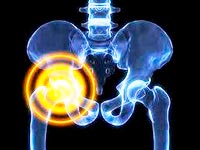 It should be immediately noted that the primary arthrosis in the initial, 1 degrees of pathological disorders often does not show itself clinically. The unpleasant sensations are limited to increased fatigue of the limbs, and that is not in those scales that would make the patient go to the doctor. The secondary arthrosis of the hip joint, the symptoms of which lay on the causal disease, usually immediately accompanied by transient pain in the articulation.
It should be immediately noted that the primary arthrosis in the initial, 1 degrees of pathological disorders often does not show itself clinically. The unpleasant sensations are limited to increased fatigue of the limbs, and that is not in those scales that would make the patient go to the doctor. The secondary arthrosis of the hip joint, the symptoms of which lay on the causal disease, usually immediately accompanied by transient pain in the articulation.
The main manifestations of the osteoarthrosis of the hip joint:
- Morning stiffness and pain when moving;
- pain with an increased load on the joint or alone, transient or constant;
- Crunch in a joint characterizing osteoarthritis 2 degrees;
- deformation of the hip joint;
- Involvement in the pathological process of knee joints, change the axis of the limb.
These clinical signs of the disadvantage of the hip joint characterize this or that stage of the process.
Stages of the development of hip osteoarthrosis
Distinguish three stages of the development of hip arthrosis. Symptoms of different stages differ in varying degrees of severity and gradually lay down on each other.
Tazobed Osteoarthrosis 1 degree
It may be asymptomatic, but more often at the very beginning of the disease, periodic pains arising after exercise and long-term walking, passing alone. Pain is localized in the joint, but can give in the thigh and knee. X-ray at this stage of the development of arthrosis is already noticeable by some minor bone expansions, but they do not deform the joint. The articular slot is slightly narrowed, the bones are not changed.
Arthrosis of the hip joints of 2 degrees
 Unlike osteoarthritis 1 degree, the sign of the arthrosis of the joints of the 2 degrees is intense pains that give in groin and the thigh leading to the chromotype when walking and persist in peace. At this stage of arthrosis there is a limitation of the mobility of the joint, mainly in the external assignment and rotation of the thigh. Begins to form leading bending contractures. The thigh deflects inside, currging the axis of the limbs, increasing the load on the knee joint and causing the appearance of pain in it. Limiting mobility in the joint becomes the cause of muscle atrophy and tendons, reflected in the decrease in the hip circle.
Unlike osteoarthritis 1 degree, the sign of the arthrosis of the joints of the 2 degrees is intense pains that give in groin and the thigh leading to the chromotype when walking and persist in peace. At this stage of arthrosis there is a limitation of the mobility of the joint, mainly in the external assignment and rotation of the thigh. Begins to form leading bending contractures. The thigh deflects inside, currging the axis of the limbs, increasing the load on the knee joint and causing the appearance of pain in it. Limiting mobility in the joint becomes the cause of muscle atrophy and tendons, reflected in the decrease in the hip circle.
X-ray arthrosis of the joints of 2 degrees is distinguished by the presence of large osteophytes deforming the joint, disruption of the configuration of the femoral bone head, the presence of a cyst, shortening the hip neck, the narrowing of the articular gap.
Arthrosis of the hip joints of 3 degrees
Pains wear a constant exhausting character, make it take to use a walking cane, move less. The mobility of the joint is sharply limited, the muscles of the thigh, the leg and the berries are atrophied. The flexible leading hip contracture leads to the destruction and shortening of the limb, the deviation of the axis of the pelvis, the destruction of the lumbar spine.
X-ray symptoms 3 Stages of arthrosis: extensive bone growths, deformation of the head of the femur, shortening the neck of the thigh, the presence of multiple cysts in the epiphyshes, a sharp narrowing or absence of the articular gap.


